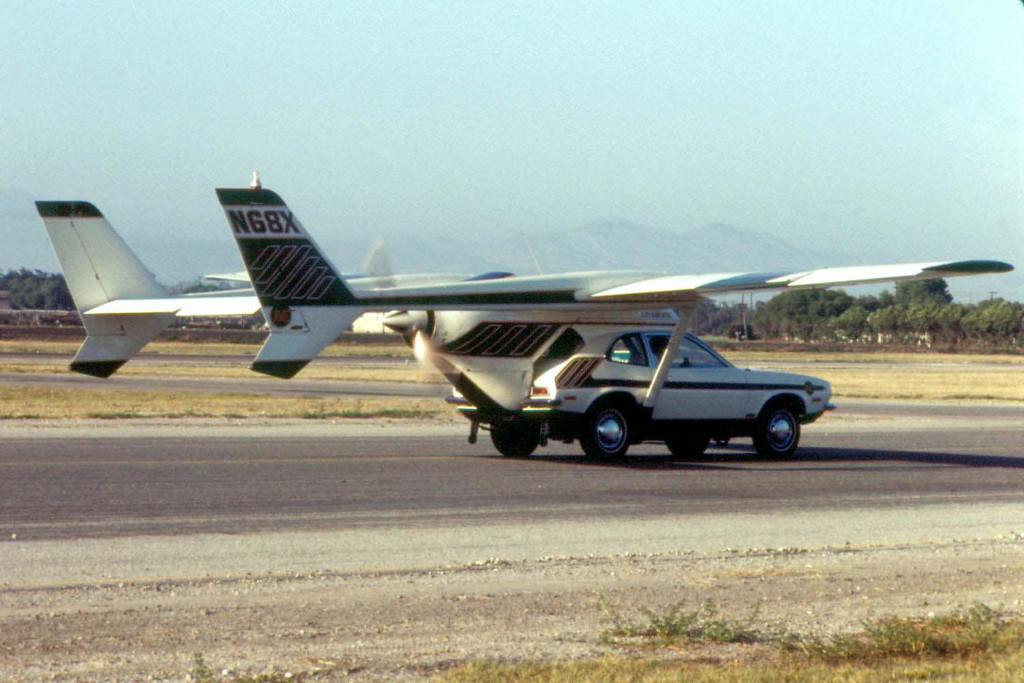[ad_1]
While the flying car might be within civilization’s grasp today, some crafty California engineers in 1973 attempted to bring the future of personal flying closer.
The AVE Mizar was literally a Ford Pinto with wings and additional flying features. The project had early aspirations until a test flight brought about the inventors’ untimely deaths.
‘The Flying Pinto’

Ohio-based project engineer Henry Smolinski made a career in engine and aircraft design for Rocketdyne. In 1971, Smolinski left Rocketdyne to start a new venture with his friend Harold ‘Hal’ Blake. The twosome formed Advanced Vehicle Engineers (AVE) with the mission of taking a roadworthy car to the skies.
Smolinski and Blake came up with the ‘Mizar.’ The word is derived from the Mizar star, known as a ‘double star’ that gives off the illusion of a bright, singular star. The aircraft itself wasn’t assembled from scratch but was rather just a Ford Pinto with the rear of a Cessna Skymaster.
The duo, however, recognized the Skymaster’s clever design, which featured two engines with the same thrust line, front and back. While keeping the Skymaster’s engine power, the front was replaced with the entire Pinto.
Of course, the Mizar was considerably heavier thanks to the car in place of the plane’s front. Smolinski and Blake knew this and upgraded the Skymaster’s rear engine from a 220-horsepower unit to a 300-horsepower variant.
AVE made two prototypes of the Mizar, while up to three additional were in the works at one point in Oxnard, California. Although the Mizar was just two vehicles fused together, the Federal Aviation Administration (FAA) was planning to see the car fly in person for certification testing.
The Mizar was slated to be available in 1974, and a Ford dealer in Sepulveda (present-day North Hills), California, was eager to sell it. The car was projected to cost up to $30,000 ($214,000 in 2025).
A Bitter End for Henry and Hal
The first test flight of the Mizar Flying Pinto occurred on 26 August 1973 at Camarillo Airport. Pilot Charles Janisse managed to fly the vehicle 120 feet in the air before landing it in a bean field. During the flight, the right wing strut’s mounting attachment failed, and Janisse called an audible to land prematurely, as stress on the wing would likely lead to catastrophe.
Regardless, another test flight happened on 11 September 1973 at Van Nuys Airport. With Janisse unavailable for the test, Smolinski opted to pilot the Mizar with Blake in the passenger seat.
During the test flight, AVE didn’t seem to have fixed the right wing strut. Unfortunately, this time, the wing folded and detached from the body, causing the vehicle to fall apart in the air before brushing a treetop and landing on a parked pickup truck. The crash caused an explosion, and both Smolinski and Blake died instantly.
The National Transportation Safety Board (NTSB) issued a crash report that revealed the vehicle was over gross weight thanks to the Pinto. The report also cited shoddy welding as the primary cause of the bad strut.
The Mizar Flying Pinto project and AVE ceased immediately following the crash, though Smolinski and Blake at the time held the elusive honor of getting their flying car off the ground when others before them couldn’t.
Legacy of the AVE Mizar “Flying Pinto”
Despite the tragic deaths of the AVE’s engineers, the 1973 flying car got the attention of Albert R. Broccoli and Harold Saltzman, the producers of the following year’s James Bond film The Man with the Golden Gun. In the movie, the main antagonist, Francisco Scaramanga, played by Christopher Lee, escapes in a similar car with wings. The actual vehicle, however, was small and remote-controlled.
In 2010, TIME Magazine selected the AVE Mizar as one of ‘The 50 Worst Inventions’. The blurb concluded, ‘Some things are better left to the movies.’ Coincidentally, the Ford Pinto itself ended up on the list for ‘the nasty tendency to literally explode’ upon a collision.
[ad_2]
Source link


